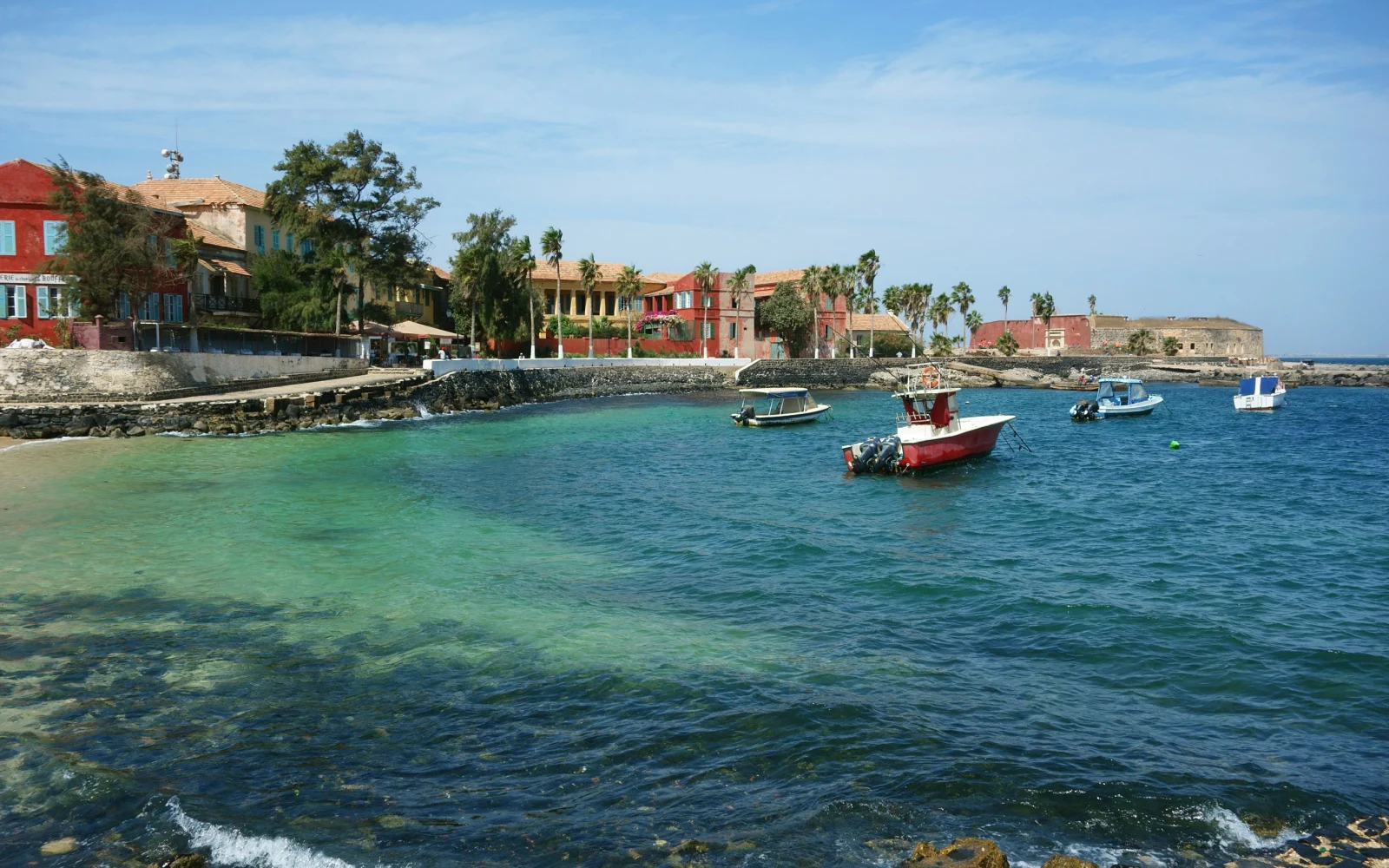What's the best time to visit Senegal?
The best time to visit Senegal is during the dry season from November to March. This period offers pleasant weather and is ideal for exploring. Don’t miss the Niokolo-Koba National Park for wildlife and bird-watching.
You can also enjoy cultural festivals like the Gorée Diaspora Festival in November and Dakar Fashion Week in December. Senegal celebrates Christmas with unique traditions, including Christmas trees and lights in the capital city.
While it may might not be atop your bucket list of countries to visit, if you do end up planning a trip to this African gem on the Atlantic Ocean coastline, you’d better learn about the best time to visit Senegal.
In addition, we’ll tell you when to steer away from the peak season crowds and what amount of money to set aside to ensure a smooth stay. Stick with us to the end of this carefully crafted guide, as there’s a useful FAQ section too!
The Overall Best Time to Visit Senegal
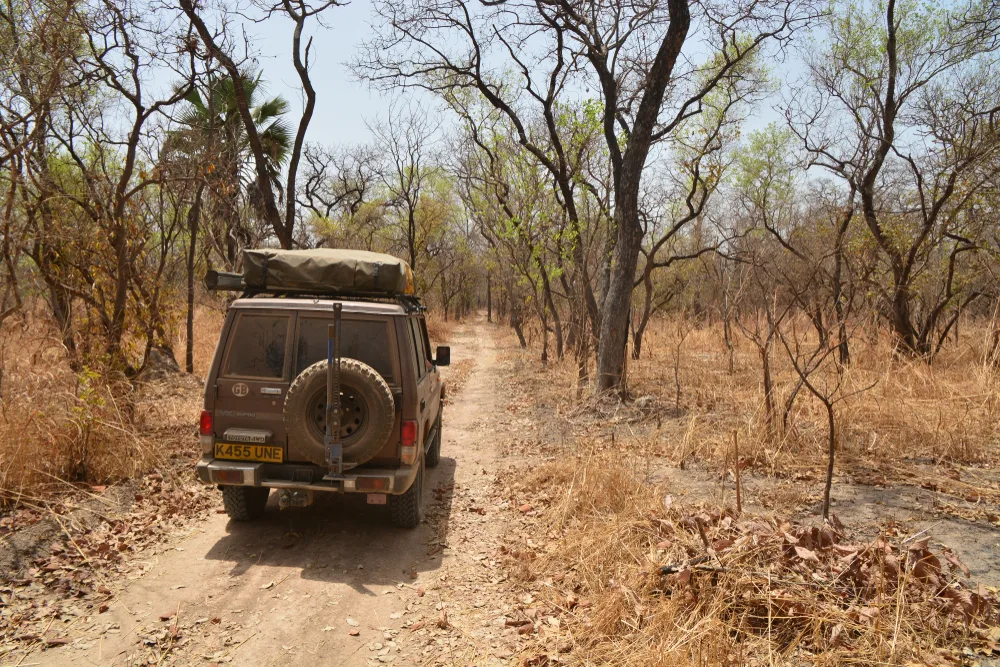
Niokolo Koba National Park, Senegal – 03 13 2017: Toyota Land Cruiser LJ70 on dirt track whilst travelling overland through Senegal/Marcus Stevens/Shutterstock
The best time to visit Senegal is during the dry season, which lasts from November through March. Travelers flock to Senegal at this time to take advantage of the pleasant weather — this means making reservations well in advance is a must.
Next, keep in mind that the Niokolo-Koba National Park is open from mid-December to the end of April, so if you visit Senegal during the dry season, pay the park a visit too.
Arguably the prime location to observe elephants, hippos, crocodiles, elephants, and antelopes, this park will make you fall in love with the African wilderness. The country’s dry season is ideal for bird watching, too!
We also advise you to make time for the Gorée Diaspora Festival (November). Promoting the connection between Senegal and the descendants of slaves from Gorée island, this festival aims at blending both traditional and contemporary music performances, debates, seminars, exhibitions, and dances.
Popular public holidays in November include All Saint’s Day, the Grand Magal of Touba, and Prophet Mohhammed’s birthday, so check out local celebrations.
Although Senegal is a Muslim country, Christmas is still celebrated. If you head to the capital, you’ll come across Christmas trees and plenty of lights.
That said, don’t expect the Western way of celebrating Christmas with myriads of festivities and endless fireworks. If you’re into fashion, make sure to attend Dakar Fashion Week in December.
Between Boxing Day and January 2, the Abéné Festivalo takes place. Hosted on a yearly basis, the Abéné Festivalo honors Casamance culture through djembe, wrestling, dancing recitals, and other performances.
Cheapest Time to Visit Senegal
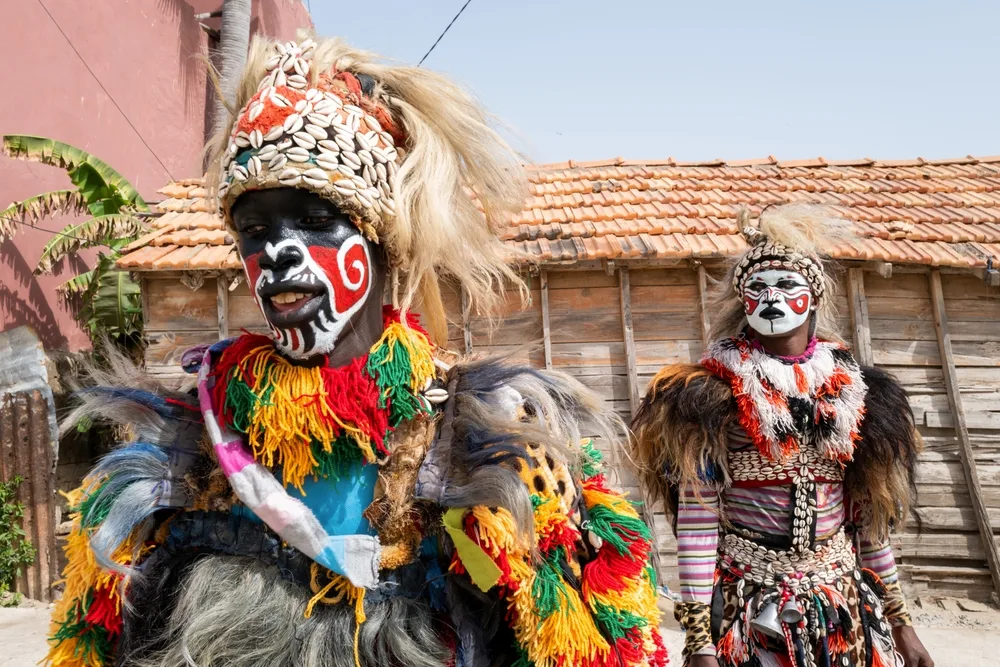
Saint Louis, Senegal, Africa, June 12 2023, fake lions in disguise scaring children on a street in the city of Saint Louis/Pierre Laborde/Shutterstock
The cheapest time to visit Senegal is in September. Being the least expensive month, September provides visitors with attractive airfare prices and affordable hotel rates.
There’s a caveat, though. The reason why Septembers are cheap in Senegal is thanks to the heavy rainfall accompanied by humidity and hot days.
The month sees an average relative humidity of 81% and temperatures around 80°F. Although not the ideal combination for most travelers, if you’re on a budget, taking advantage of this month’s offer may turn out to be just great.
First of all, fishing is top-notch at this time, but if that isn’t your thing, you can simply hit the waters — think jet skiing, scuba diving, and flyboarding.
Also, September visitors will be right on time for the yearly religious pilgrimage, the Grand Magal of Touba. Commemorating the exile of Ahmadou Bamba to Gabon, this event grows in popularity year after year.
Least Busy Time to Visit Senegal
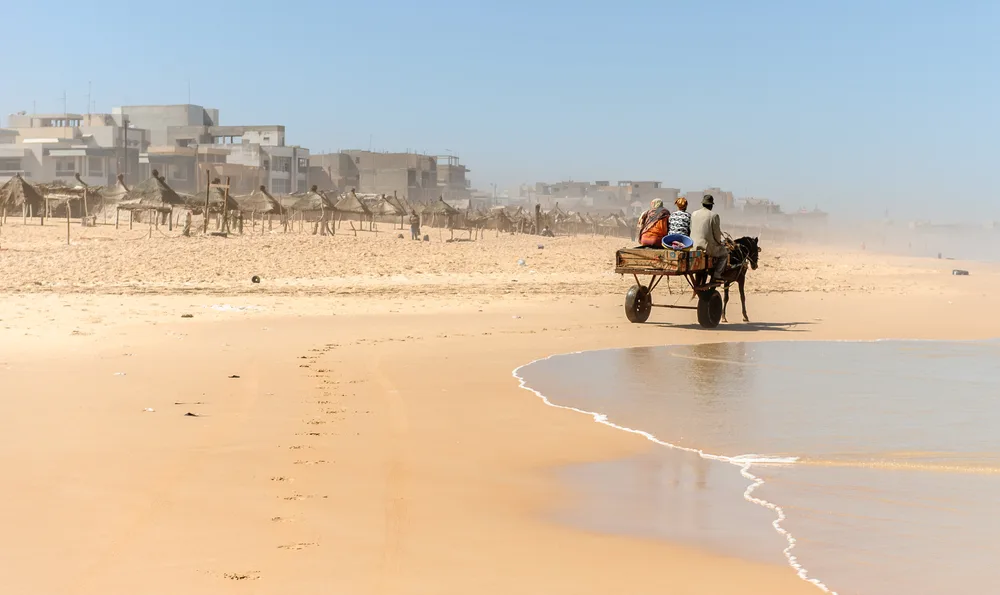
Leonie Broekstra/Shutterstock
The least busy time to visit Senegal is in September and October. And no wonder — with September’s humidity and October being the hottest month in the entire year, travelers should really think before undertaking any strenuous outdoor activities.
But if you wish to enjoy Senegal’s laid-back vibe and beach bars in greater solitude, this limbo period is absolutely ideal.
Those lucky enough to make it in time for La Fête du Roi, celebrating Senegal’s Southern King, will find their stay unforgettable. Be it wrestling competitions, spiritual rituals, or warrior dances, La Fête du Roi is always a fun event to attend.
Worst Time to Visit Senegal
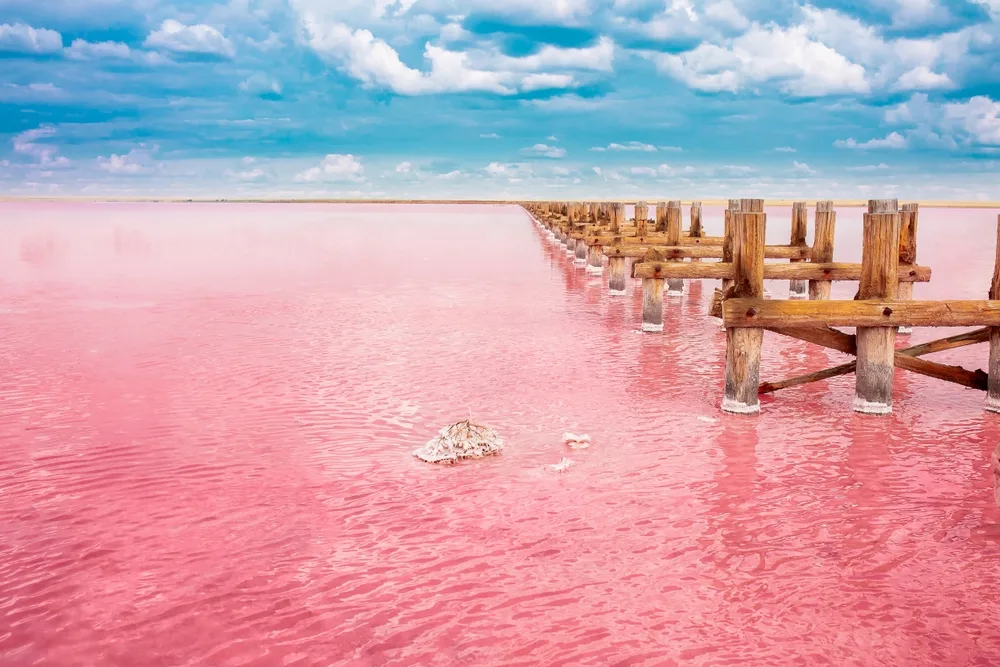
Vera Larina/Shutterstock
The worst time to visit Senegal is in July or August. Being the rainiest months, July and August can easily make all your plans go out the window.
Smooth transportation used to be a big issue during the country’s wet season, and while that situation has improved, you can still stumble upon obstacles and roadblocks if you wander off the beaten path.
That said, traffic on the roads is slower at this time anyway, even without flooding. The rain also awakens some of the most annoying summer creatures — mosquitos.
Considering malaria is endemic in Senegal, these rainy months require you to take that much extra caution. The coastal cities are said to have a much lower risk for malaria, though, but still be extremely cautious.
With that said, not everything is bad during the wet season. For example, the lush landscape is a nice “side” effect of the intense rainfall.
Also, this period sees plenty of memorable national holidays, such as the Christian festival of Assumption (August), celebrating the assumption of Mary’s body and soul into heaven, and Tabaski, or Eid-al-Adha (August), a Muslim commemoration of Abraham’s willingness to sacrifice his son for God.
Senegal by Month: Climate & Activities
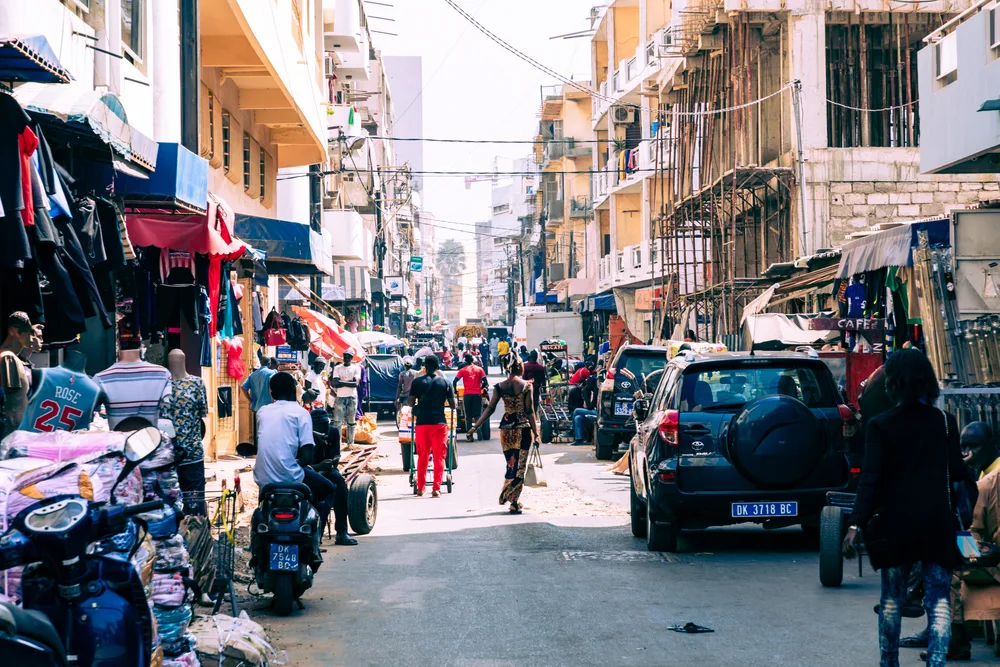
DAKAR, SENEGAL – NOVEMBER 11, 2019: People working and traffic at Senegal capital Dakar, West Africa/Curioso.Photography/Shutterstock
Still unsure about the best time to visit Senegal? Take a look at our summary of the weather and climate by month below:
January
Winter temperatures in Senegal range from 18 to 25°C (64-77°F). January is an ideal time to explore the vibrant markets of Dakar, visit Gorée Island, and enjoy cultural events and festivals.
February
Similar to January, February maintains mild temperatures between 18 to 26°C (64-79°F). Visitors can explore the Pink Lake (Retba), go birdwatching in Djoudj National Bird Sanctuary, and experience traditional wrestling events.
March
As spring arrives, temperatures range from 18 to 27°C (64-81°F). March is perfect for exploring the historic city of Saint-Louis, visiting the House of Slaves on Gorée Island, and enjoying the Senegalese music scene.
April
Spring temperatures in Senegal range from 19 to 28°C (66-82°F). It’s an ideal time for birdwatching in the Saloum Delta, exploring the Lompoul Desert, and participating in the Saint-Louis Jazz Festival.
May
May sees temperatures ranging from 21 to 29°C (70-84°F). It’s a great month for visiting the Bandia Reserve for wildlife safaris, enjoying water activities in Saly, and exploring local crafts in Dakar.
June
Summer arrives with temperatures between 23 to 30°C (73-86°F). June offers opportunities for relaxing on the beaches of Cap Skirring, exploring the Casamance region, and attending traditional dance performances.
July
July maintains warm temperatures from 24 to 30°C (75-86°F). It’s a popular month for water sports in Dakar, exploring the historic island of Ngor, and experiencing the Dakar Rally.
August
Temperatures in August range from 24 to 30°C (75-86°F). It’s an excellent time for cultural exploration in Dakar, visiting the African Renaissance Monument, and enjoying the lively atmosphere.
September
As fall begins, temperatures range from 24 to 31°C (75-88°F). September offers a pleasant transition, with opportunities for exploring the Saloum Delta National Park, attending the Dak’Art Biennale, and enjoying local cuisine.
October
October sees temperatures ranging from 24 to 31°C (75-88°F). It’s a great month for visiting the House of Slaves on Gorée Island, exploring the Pink Lake, and attending cultural festivals.
November
Fall temperatures range from 22 to 29°C (72-84°F). November is perfect for birdwatching in Djoudj National Bird Sanctuary, exploring the African Renaissance Monument in Dakar, and enjoying traditional dance performances.
December
Winter returns with temperatures ranging from 19 to 27°C (66-81°F). December brings opportunities for exploring the historical sites of Saint-Louis, relaxing on the beaches of Dakar, and participating in festive celebrations.
So, When’s the Best Time to Visit Senegal?
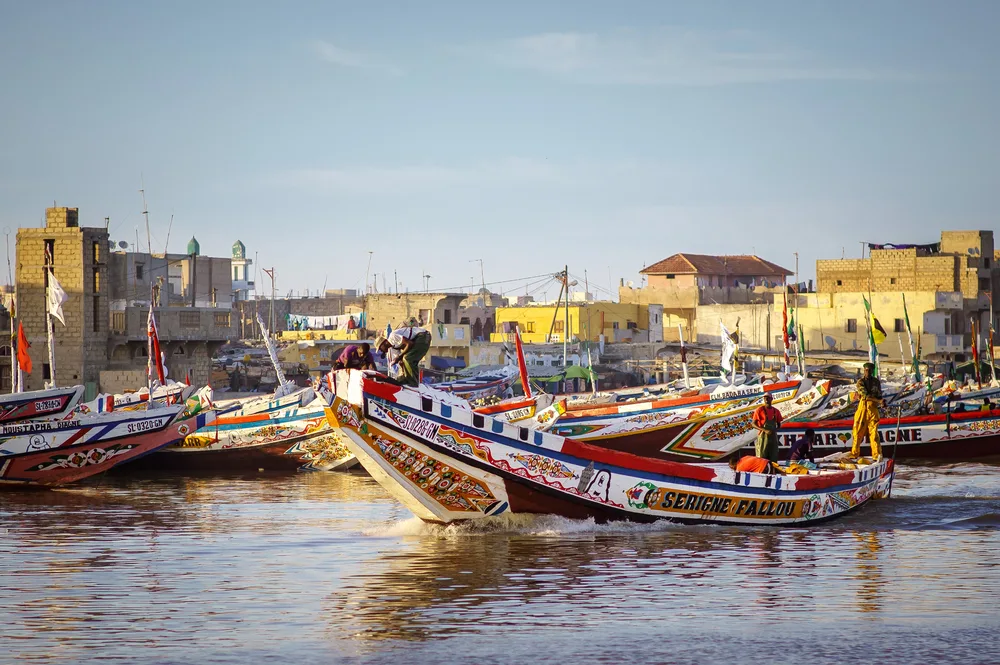
SAINT-LOUIS/SENEGAL – NOVEMBER 13, 2013: Senegalese fishermen return home on their colorful fishing boat at sunset to the port of Saint-Louis, Senegal/Vladimir Zhoga/Shutterstock
| 👍 Best Time to Visit | November-March |
| 💲 Cheapest Time to Visit | September |
| 🗓️ Least Busy Time to Visit | September-October |
| 👎 Worst Time to Visit | July-August |
The best time to visit Senegal is during its dry seasons, from November until March. And there are plenty of reasons to visit.
Senegal’s authenticity, hospitality, nature, and memorable points of interest will make even the most traveled of people look in awe and plan their return trip even before their holiday has actually ended. Happy travels!



